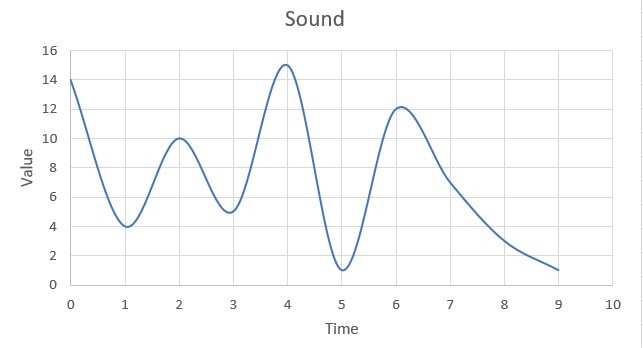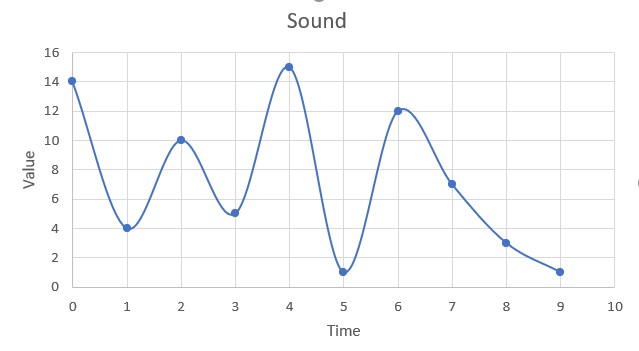Storing Sound using Binary
Like all other data, sound is stored as binary on a computer, but how do we get from a sound to a list of binary?
Sound is captured - usually with a microphone - this creates an analogue version of the sound, a wave such as this:

This sound wave can then be digitised (converted to a digital file) by sampling. That simply mean measuring the sounds value - its amplitude - at certain, regular points in time:

We then convert those values into Binary which gives us this table

The computer then stores the list of binary values, along with information about the sample rate - how many samples were taken per second, and the bit depth - how many 0's and 1's are used in each value (so in my table bit depth is 4 as there are 4 numerals for each binary value).
The sample rate is really important - not only does it mean that the data will be formed back into the correct wave, it also really affects the sound quality. The higher the sample rate, the higher the quality of the sound. Think about a song. imagine just hearing a note every 2 seconds - it would sound broken and rubbish, most of you will have seen something like this with lag on video calls or games.
Typical sample rates are 44,100Hertz (Hz) and 48,000Hz . 1 Hertz = 1 sample per second
There might be an exam question on how much space a sound file will take up. For example, a 10 second sound with a sample rate of 50Hertz is stored using 8bit binary. How much space does it take up on the hard disk.
To work this out you use this formula : sound file size = time (in seconds) * sample rate * bit rate. so:
10 * 50 * 8 = 4000 bits (or 500 bytes - remember 8 bits = 1 byte)
